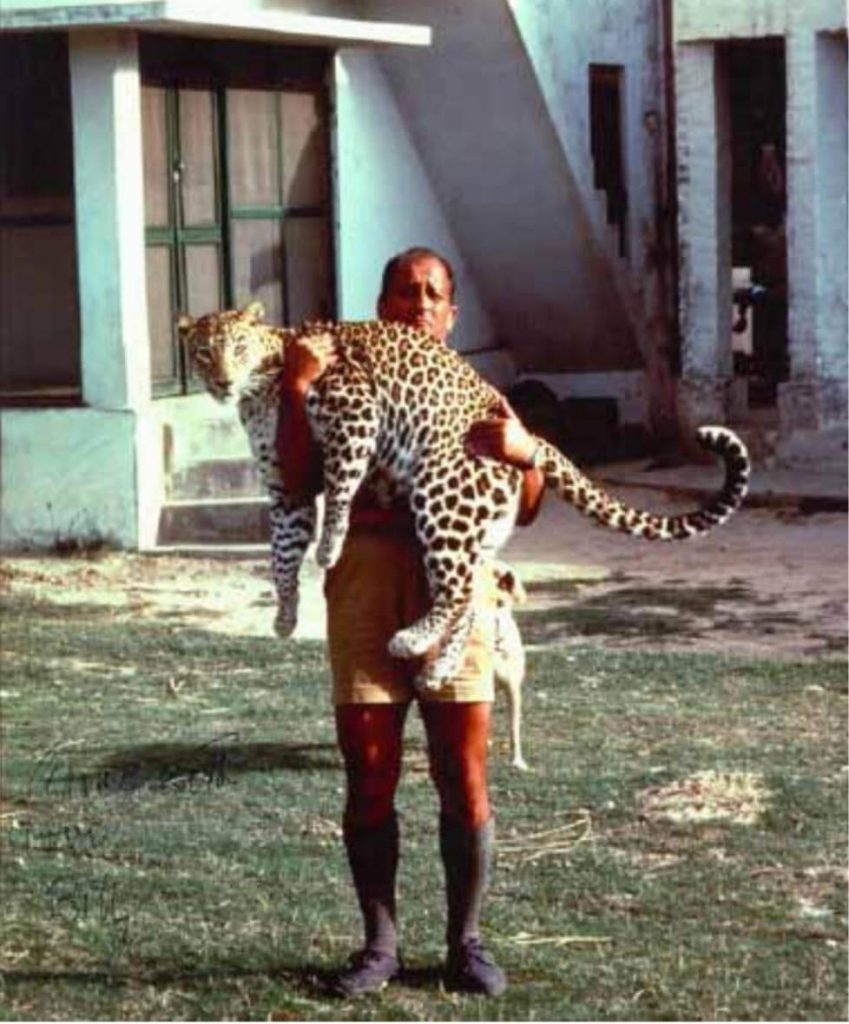
Maybe it was the only way to save tigers, but Billy Arjan Singh had a fearsome reputation for being crusty, cantankerous, and unwilling to compromise when it came to the protection of the wild places he loved and championed. Possibly India’s fiercest conservation activist, intimidating, impatient with ignorance and contemptuous of bureaucracy, his life was one long battle to save India’s wildlife from extinction.
An aging rattling typewriter was Billy’s chosen weapon, barraging politicians, haranguing the forest department, and firing volleys of vehement advocacy in articles and books. He wrote: ‘Some natural resources are simply irreplaceable. It is imperative that man should learn to live with other species on this planet, as these other forms of life must be allowed to exist as part of nature’s evolutionary plan.’
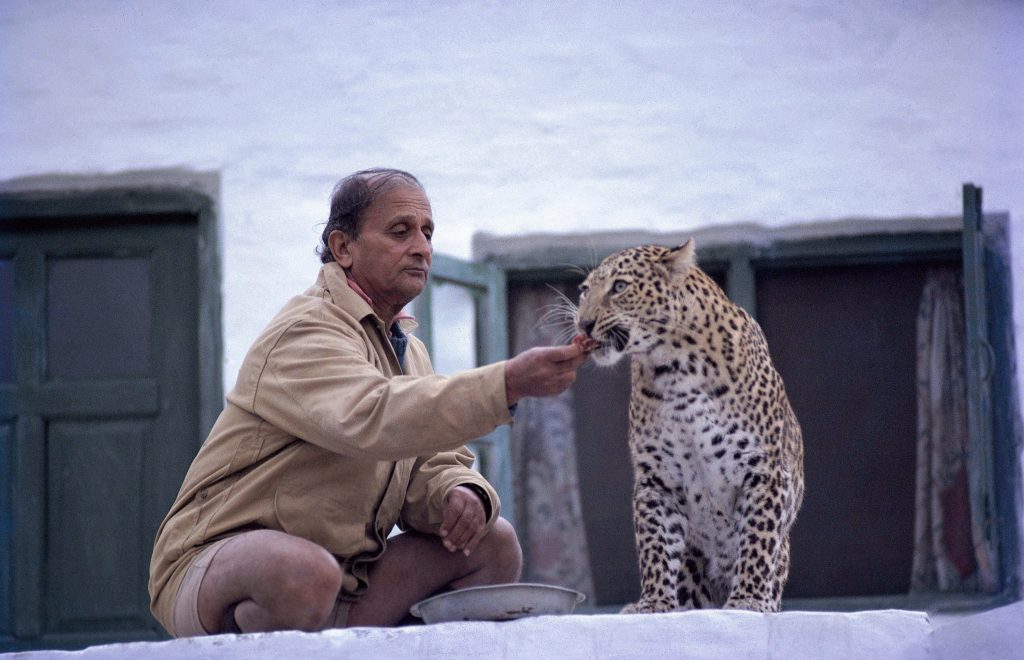
Billy’s campaign headquarters was Tiger Haven, a farmhouse on the edge of Dudhwa forest from where he waged war on the authorities in defence of India’s wild places. He believed that as long as the big cats flourished as apex predators, a healthy jungle would be secured – he advocated for Dudhwa to become a sanctuary, and led a controversial experiment to supplement its depleting leopard and tiger population by rehabilitating captive cats back into the wild.
I first met Billy when we crossed the Nepal border and visited Tiger Haven in the western Indian Tarai with the Survival Anglia film crew in 1975. He had heard of Tiger Tops but was deeply distrustful of tourism and the media as relevant to his conservation struggle. He told us later he only agreed to meeting because the telegram announcing our arrival read ‘Gin’ Edwards instead of Jim — Billy loved his martinis and the typo melted the ice. Like many on a mission, Billy was hard to approach but once accepted he became a loyal friend with his acerbic humour and shy charm.
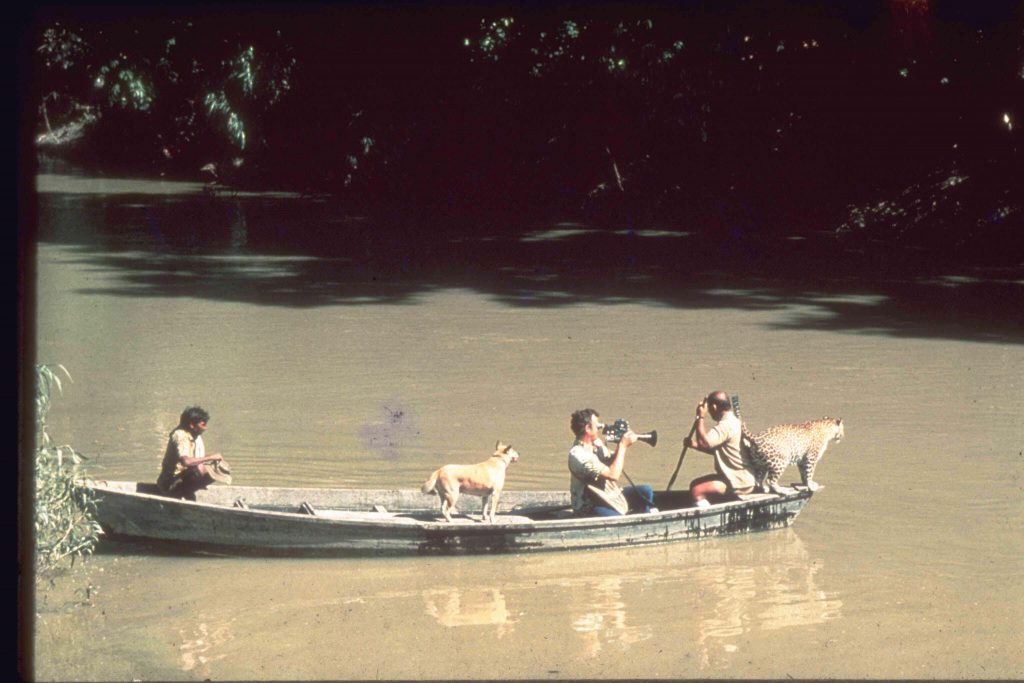
Staying with Billy on the edge of the national park, wild animals had undisputed priority. Humans took breakfast in a cage on the veranda whilst the increasingly boisterous big cats roamed free – a precious privilege to be in such close proximity, with our roles reversed. As we sipped hot milky tea behind bars, Billy’s leopard Harriet and her sister Juliette played in the dust with the brown dog Eelie. The python, Monty, snoozed in the granary rafters, and a passing troupe of rhesus monkeys coughed nearby.
The clink of Billy’s weight-training regime penetrated the early morning mist — he kept himself fighting fit. Spruce in shorts, long socks and leather boots, his biceps bulged and he could lift the growing cats into his old green jeep for a drive to acquaint them with their natural prey. He built machan tree platforms deep in the jungle to familiarise the leopards with their new terrain and hone their hunting instincts.
Harriet gave birth to two cubs, fathered by Prince, and during the heavy monsoon of 1976 Billy was anxious to bring her safely home from the flooding jungle. Jim Edwards tells
how the river was a raging brown torrent, eddying and overflowing its dense tangle-rooted banks. “It was almost impossible for anyone to have controlled the boat against the current to a safe landing, but he wouldn’t allow us to help due to Harriet’s sensitivity. We were all spellbound watching Billy complete this manoeuver. A few hours later he came back with Harriet and her cubs in the punt, again a tremendously dangerous journey.”
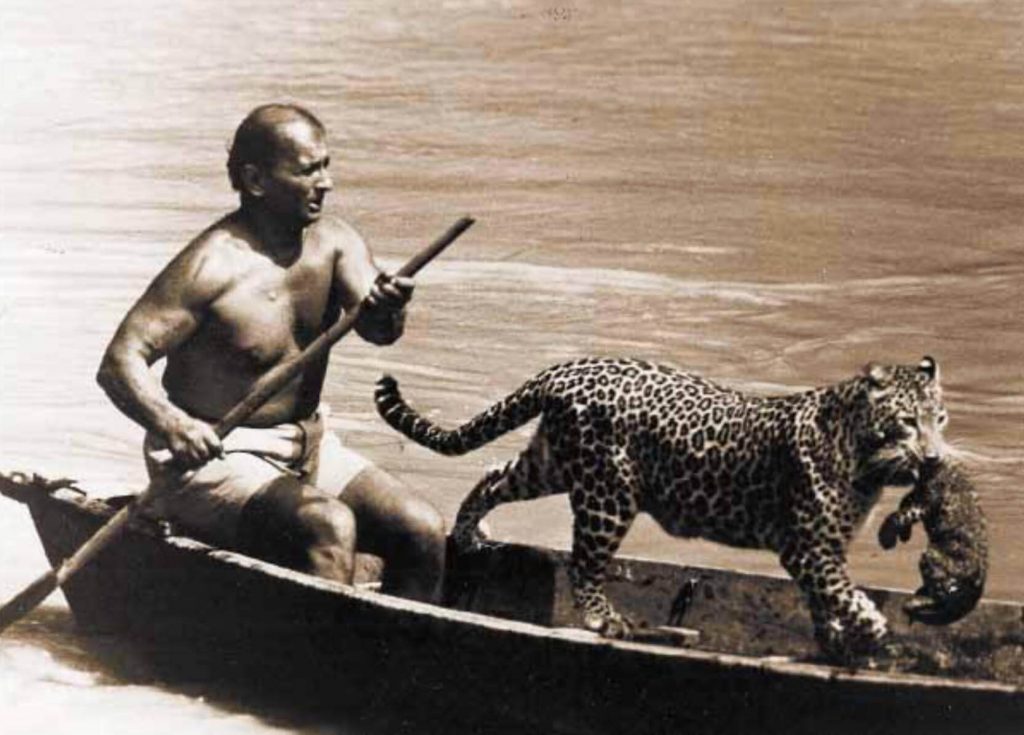
Billy’s crusade was tireless, adamant and inflexible, but often ended in despair and disappointment – none of the Prince, Harriet, Juliette and Mameena leopard reintroductions ended happily. Stories told of him banging heads together when he encountered jungle poachers and shouting at negligent wardens — disgruntled forest officials and villagers united against him, accusing him of creating man-eaters and laying down poison.
Billy himself had an extraordinary rapport with the semi-wild cats and warned others to stay away, but they had no real fear of humans, and as they reached maturity there were too many domestic animal casualties and human near-misses – a young English guest was scratched in the shower, there were attacks on Billy’s staff, and then on two occasions tragedy struck when a local child was accidently killed straying too close to the farm.
But Billy’s dogged persistence won successes and influential admirers. Prime minister Indira Gandhi launched Project Tiger in 1973, writing to the Uttar Pradesh chief minister: ‘It is easy to come by armchair conservationists, but rare indeed to find a man with the dedication and perseverance to act in support of a cause he loves.’
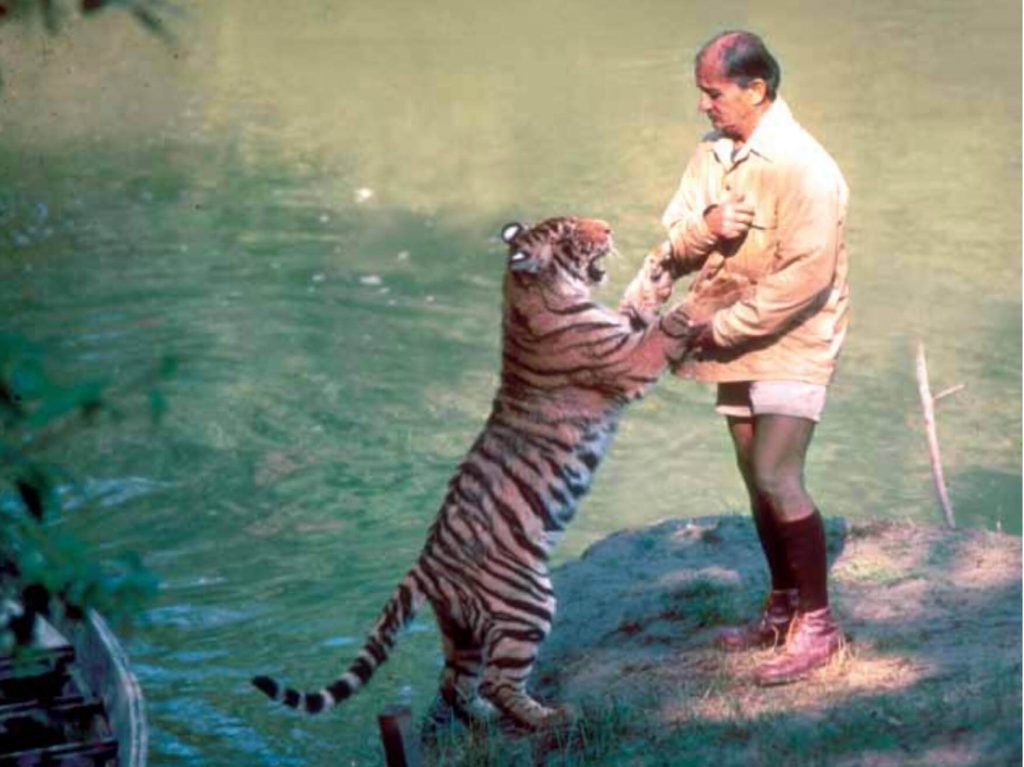
I accompanied Billy to World Wildlife Fund’s 1976 annual conference in San Francisco where he was awarded the WWF gold medal and a heavy gold watch. It was Billy’s only visit to the States and, with Sunil Roy India’s tourism director general and Leo Le Bon founder of Mountain Travel USA, we travelled to Yosemite National Park. Billy was unmoved by the soaring scenery and spectacular sheer rock, complained petulantly of the lack of wildlife, and was only appeased when he spotted a single deer in a meadow. Powerful friends were also useful when Billy lost the keys to his Godrej-brand safe — he called on his supporter the Godrej conglomerate chairman in Mumbai to solve the problem.
Our trust supported Tiger Haven for many years, and when the time came to try reintroducing tigers to Dudhwa, John Aspinall sourced a zoo-born cub in England. With Pan Am colleagues we helped Billy ship a young tigress named Tara in a steel crate from Twycross Zoo, arriving securely strapped onto the back of his elephant Sitara. We were full of hope and optimism as Dieter Plage filmed Billy crossing the river in the small wooden boat giving Tara her first uncertain glimpse of freedom.
On Billy’s death at Tiger Haven aged 92 on 1 January 2010, his relative Rohit Brijnath remembered: “Legacy is not easily defined. But we can say of Billy that he was a first and an original, a tiger explorer who built an entire life around a single cause.”


